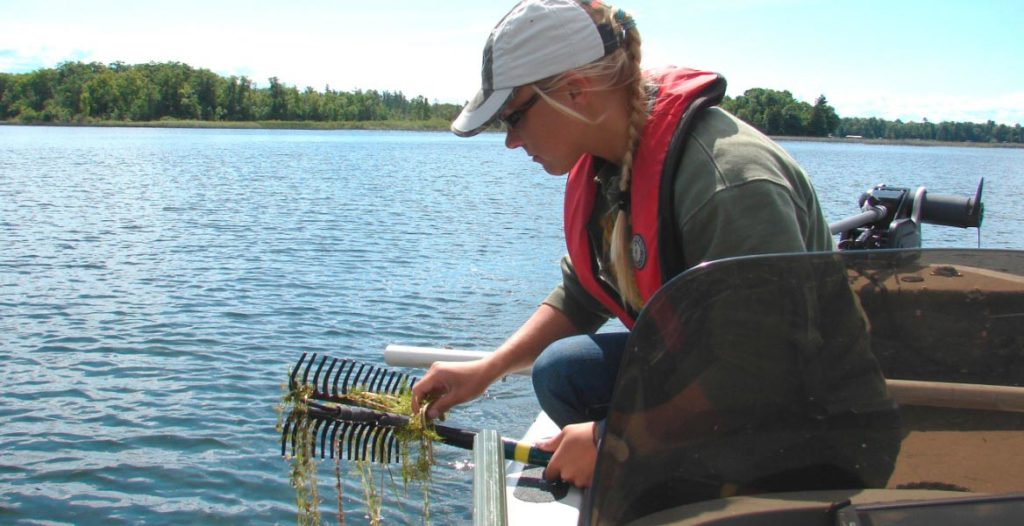
Lake Vermilion Vegetation Survey Completed
This August, vegetation experts from RMB Environment Labs completed a survey of Vermilion’s littoral acres to inventory native vegetation and check for undetected aquatic invasive species (AIS) infestations. No new invasives were noted.
The survey began in 2016 and had been scheduled over a four-year period. However, with servious threats like starry stonewort and hybrid watermilfoil lurking in nearby Minnesota lakes, the survey was accelerated so our AIS prevention team could see where we stand.
RMB mapped the known small curly-leaf pondweed infestations in Everett and Stuntz Bays. They also found additional curly-leaf in Wolf Bay and a sparce presence in Wakeumup Narrows.
No starry stonewort, a very aggressive grass-like algae which can form thick mats, was found. Vermilion does have a native algae Nitella which can be mistaken for starry.
Also, no Eurasian or hybrid watermilfoil was detected. Eurasian watermilfoil can overwhelm native vegetation and form dense surface mats. Vermilion does have native Northern watermilfoil, which can hybridize with Eurasian. Northern watermilfoil is a desirable, well-behaved species, but its presence means we need to be vigilant for hybrids.
Native aquatic plants are very important because of their ability to maintain water quality and fish habitat. Many plants also stabilize bottom sediment to promote a healthy water column. Some of the vegetation species in Lake Vermilion are only found in lakes with good water quality, an indicator of the overall health of our lake.
RMB’s 2016 and 2017 vegetation survey reports are available here on the VLA website.
Read eVermilion